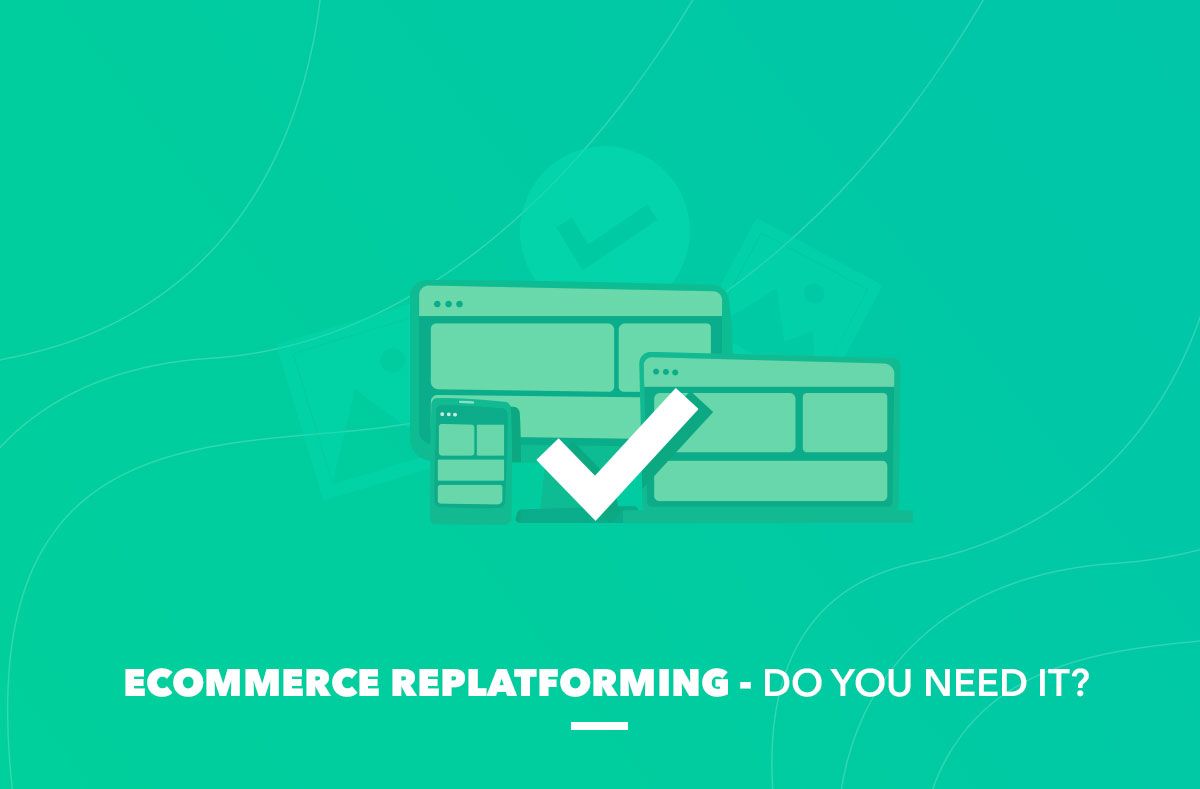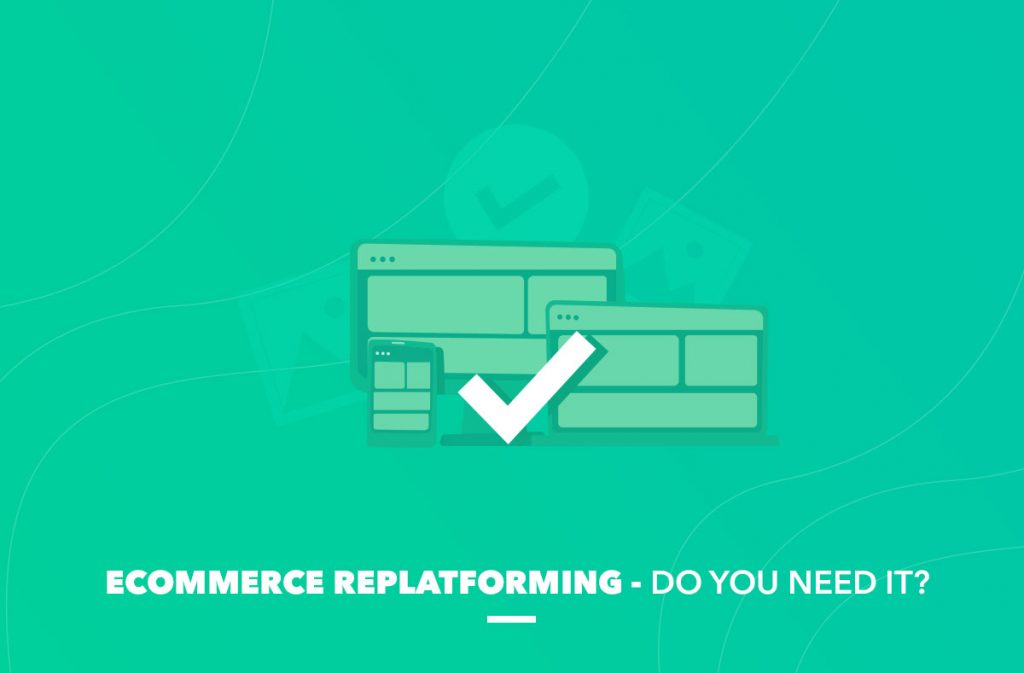
Replatforming is a potentially expensive and long move that might lead to the increased profits or might not. While there is no certainty in re-platforming, there should be one in the platform choice. The thing is, all platforms are different from each other, and each one has its perks. However, businesses are not stuck in time with their aims, and some companies might switch from one strategic aim to another. If the change is huge, a time to re-platform has already come. Moreover, re-platforming might be necessary if you are drastically dissatisfied with it and/or the platform is discontinued. So, if your business has the strategy changed or the platform does not meet your needs or is discontinued, get settled and read this article about re-platforming.
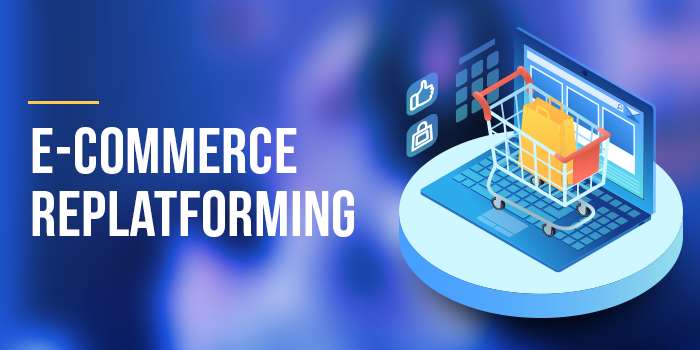
What Is Ecommerce Re-platforming
Practically, re-platforming means changing the platform that was previously used as a third-party service to build the store. The use of a different or updated eCommerce platform is re-platforming that helps achieve the business’s aims. While the idea is simple, the choice is not a piece of cake. With re-platforming, there is a need to think about whether it will be a movement from one third-party service to another, like moving from Magento to Shopify or developing a custom solution from scratch. However, both of these paths cause drastic changes in the operational part of the business. Practically, businesses need eCommerce platforms that integrate with their chosen tech stack in full. Interestingly, online retailers usually avoid writing custom solutions and most often just change one eCommerce platform for another, thus aiming to reduce their costs. The custom development option is chosen only when there is a clear economic benefit of having a custom eCommerce website. So, most often re-platforming is only about changing one eCommerce platform for another.
Why Replatform Your eCommerce Site
As far as it goes, re-platforming is a consequence of constant development. The modern retail market is a kind of Alice’s Wonderland, where you need to run quickly to just stay in the same place and you have to run twice quickly to move somewhere. Thus, the change is inevitable and the eCommerce platform that worked well for your online store a year ago might not be the best choice today. Practically, when you feel that your online store is slow, costly, and does not allow you to improve customer experiences anymore, it is time to switch to another eCommerce platform with more advanced features.
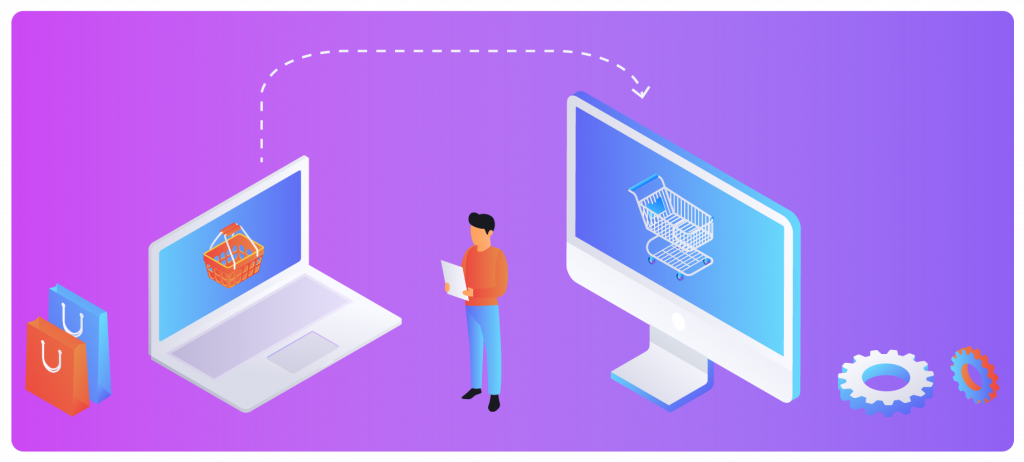
Сons of Replatforming
The biggest cons of re-platforming are time and money. Replatforming might require more resources than you initially expected. Switching eCommerce platforms is not that easy because it requires technical knowledge and problem-solving skills. As a result, this might require specific skills. So, think twice before re-platforming in terms of time and money. Are you sure it is worth it? If you are sure, the SOFTLOFT team is happy to help with all our experience and skills highly rated by our customers. During and after re-platofrming, we will need to retrain your team, migrate your data, and check your SEO features. Unfortunately, data migration isn’t perfect, so you might lose a part of your data, and probably SEO value. In addition, some of your third-party services might not be available on the newly chosen platform. Therefore, the cons of re-platforming include costs, potential loss of data and SEO value, and potential loss of third-party integrations.
When do you need to re-platform?
You need to re-platform when you need to and the potential benefits outweigh potential costs. In other words, you most likely need to re-platform when your present platform:
- Costs too much to support and develop in terms of time and money
- Creates competitive disadvantage by not keeping up with the changes in the features on the market
- Doesn’t fit your business goal anymore
- Doesn’t perform well consistently and/or is not supported anymore
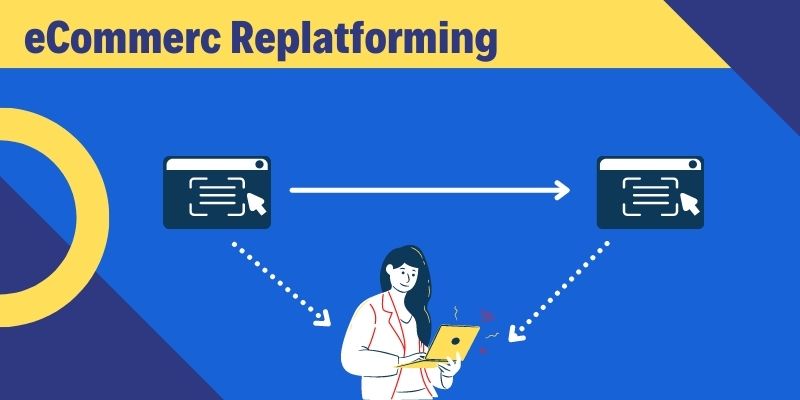
When You Don’t Need It!
If you are not sure it is a platform that causes your issues, do not re-platform. As soon as re-platforming is a very complex process, with huge costs and large interventions, make sure it is the eCommerce platform that is a problem, not something else. Oftentimes, it is not the platform that needs changing but it is a configuration and implementation that need improvement. Thus, re-platforming is not a good idea when:
- a present platform performs poorly but fits the strategic goals
- it is impossible to ensure secure data migration
- your management is not ready to learn the features of a new platform
Takeaways
Often, when you are thinking about re-platforming, the issue is not a platform but its configuration. We are ready to help here. It is hard to overestimate the importance of the eCommerce platform that you choose for your website as it is often a platform that defines the limits of what you can offer to your customers. While it is not the platform that makes successful sales, choosing the right one is the first step towards business success. So do not hesitate to change your platform if the present one does not meet your goals anymore. Professionals of SOFTLOFT are a click away to fix this bottleneck. Contact us and re-platform with ease.
